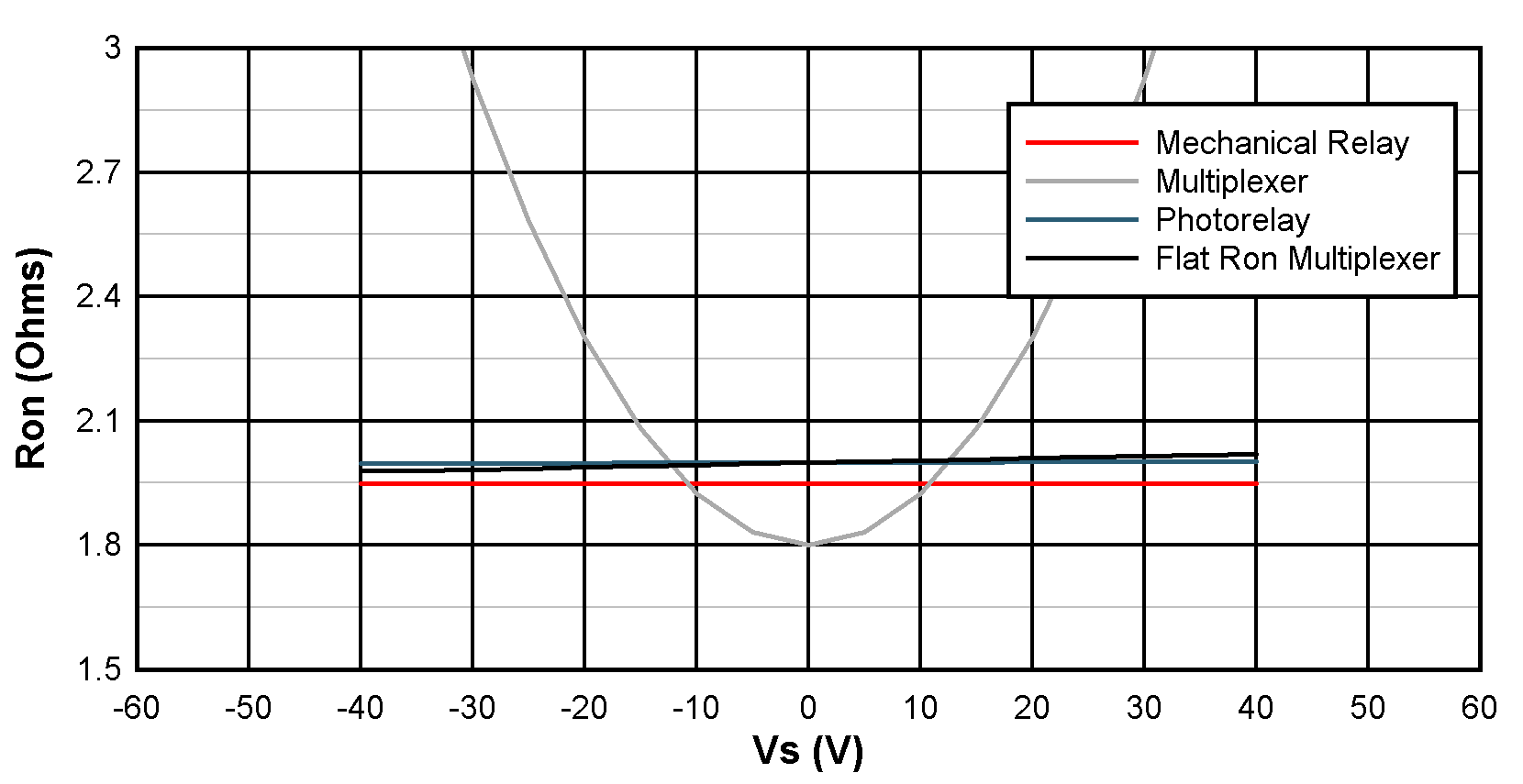SCDA036A May 2022 – June 2024 TMUX8212 , TMUXS7614D
- 1
- Abstract
- Trademarks
- 1 Size Requirement
- 2 Reliability Over Time
- 3 Power Consumption
- 4 Switching Speed and Hot Switching
- 5 Signal Isolation
- 6 Capacitance
- 7 On-Resistance and Flatness
- 8 Leakage Current
- 9 Integrated Protection
- 10Latch-up Immunity
- 11Galvanic Isolation
- 12Conclusion
- 13References
- 14Revision History
7 On-Resistance and Flatness
One disadvantage many multiplexer devices have is On-Resistance. Because of the architecture of many multiplexer devices, the On-Resistance can vary significantly across bias voltage. This can result in large distortions on the output. However, TI’s Flat On-Resistance family of multiplexers address this issue. These devices keep the On-Resistance flat across a wide bias range. As a result, the performance is more comparable to a Photorelay or mechanical relay. This Flat On-Resistance has significant benefits to system performance, reducing THD and ensuring signal integrity. These Flat On-Resistance multiplexers have extremely low distortion and bridge the performance gap to photorelays. An example of one of these TI multiplexers is the TMUX821x.
 Figure 7-1 On-Resistance of a Mechanical
Relay, Photorelay, conventional Multiplexer, and TI’s Flat Ron Multiplexer
Figure 7-1 On-Resistance of a Mechanical
Relay, Photorelay, conventional Multiplexer, and TI’s Flat Ron Multiplexer